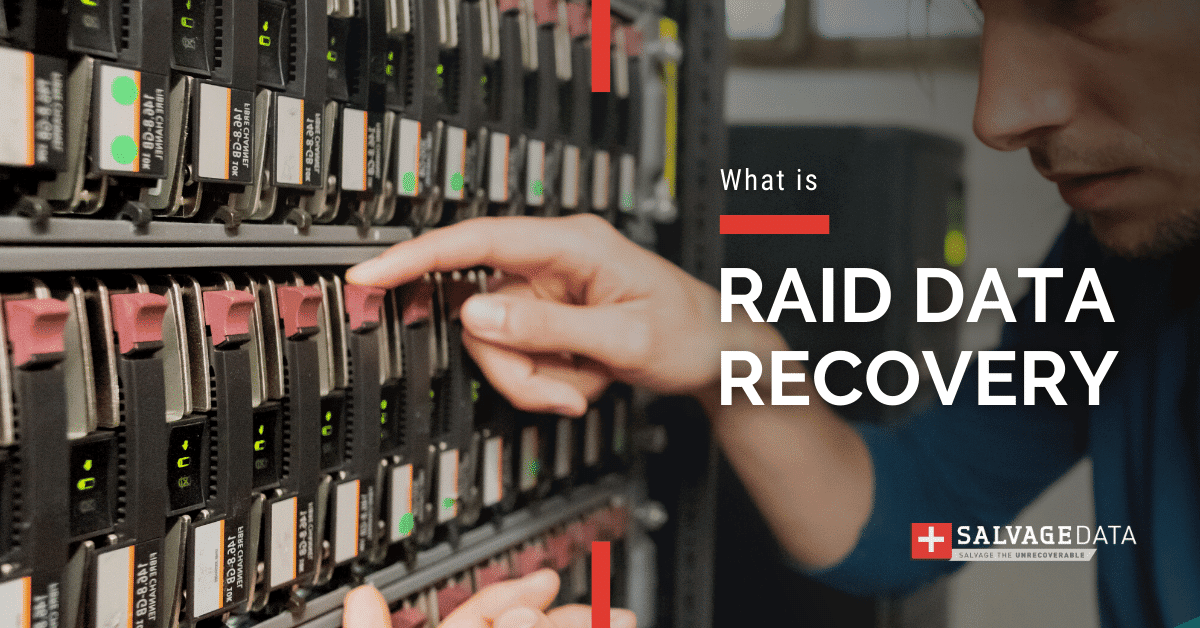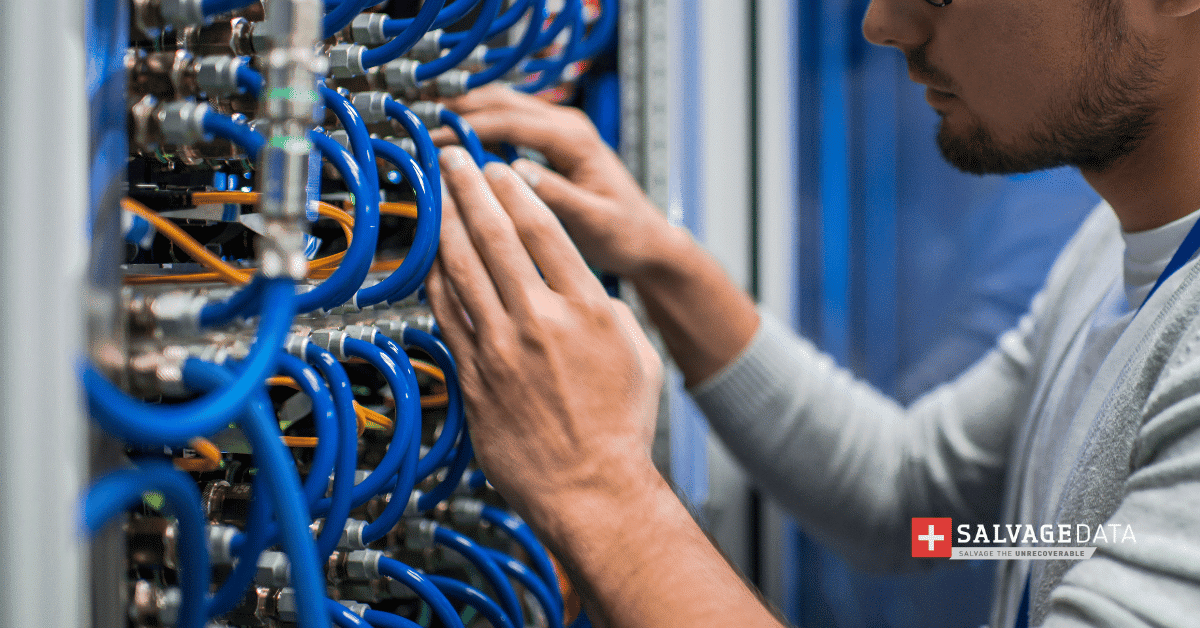Recent Articles
How To Recover Overwritten Files
The Snowflake Data Breach: A Comprehensive Overview
Mac Not Recognizing External Hard Drive: Quick Fix Solutions
How Multi-Cloud Backup Solutions Can Prevent Data Disasters
Capibara Ransomware: What is it & How to Remove
What Should a Company Do After a Data Breach: The Ticketmaster Incident
Secles Ransomware: Removal Guide
What To Do When Your Chromebook Freezes
How to Create Hyper-V Backup
What Is The Best Data Recovery Software For PC

I think there's an issue with my storage device, but I'm not sure Start a free evaluation →
I need help getting my data back right now Call now (800) 972-3282
RAID storage is a great solution to help you with data storage and with data access. However, this technology can get very complex, and building the right system from the start to get long-term benefits can be challenging. If you are new to RAID systems, this quick guide will help you learn more about one of the most popular ways to ensure data reliability and the technology behind it: the redundancy in RAID.
RAID is an acronym for Redundant Array of Independent Disks. It’s a technology that combines one or several drives so that they appear to your operating system as a single logical unit. If you need to protect important files from loss, this is a system that can help you.
RAID Calculator: Learn the RAID configuration requirements, redundancy, parity, and disk availability with our real-time RAID calculator.
That’s because in case one of the disks in the array fails, a spare disk can take its place, and in some configurations, the system still works without data loss with one failed disk.
The term RAID redundancy refers to the ability of certain types of RAID arrays to sustain multiple disk failures. RAID redundancy utilizes redundancy techniques such as data mirroring, data striping, and parity to minimize the risk of data loss due to disk failure. The redundancy provided by RAID redundancy is often used when more disks are necessary for increased storage capacity, or when better performance and speed are desired.
What’s redundancy in RAID?
Redundancy means that your data has copies stored on two or more disks on a RAID set.
Therefore, if one disk fails, you won’t lose anything on it since you still can access those files from its copies. And the array performance remains intact.
That’s why RAID arrays are great for those seeking security and reliability. RAIDs faulty tolerance usually makes this technology the best choice for several businesses, regardless of their size.
Which RAID types provide redundancy
As for data storage and distribution options, many different RAID configurations are available today.
Depending on the technology used, these options can address storage reliability, lack of capacity, and processing speed issues. But there are also those designed to provide an all-around solution.
RAID 1 – data mirroring
Data mirroring means storing the same file or information on more disks at the RAID array.
RAID 1 does exactly that, meaning it’s a reliable choice for data security and the best option to avoid data loss due to disk failure.
The redundancy on RAID 1 uses repetition to keep the data safe. However, keep in mind that it creates the exact copy of each file, so, if one file is corrupted, its copy will be corrupted as well.
RAID 10 – data striping plus mirroring
Also known as RAID 1+0, this configuration has the advantage of striping the information across the disks on the array while mirroring.
RAID 10 combines RAID 1 and RAID 0 taking the benefits of each to create redundancy. As a result, it has increased security and speed.
RAID 5 – parity
When we see parity in RAID 5 configuration we’re observing its use of a disk with the capacity for recovering data written on the other disks. It can access the data spread on the disks at a RAID array in case of a disk failure in a way it can reconstruct the lost data.
The parity on RAID 5 helps with its redundancy and offers fault tolerance.
On RAID 5 you need a minimum of 3 disks to set the configuration.
RAID 6 – data striping plus double parity
RAID 6 requires a minimum of 4 disks on its array. This means that two disks can fail before your system crashes.
The possibility of having two disk failures at the same time makes RAID 6 one of the best choices for those looking for redundancy over performance.
Businesses that need more storage space, can rely upon the RAID 6 configuration to store their data. It has increased read performance, although the performance itself depends on system software for high-performance parity calculations. Therefore, you must set RAID 6 carefully to use most of it and avoid system failure.
RAID 2 – data striping
RAID 2 is rarely used today, even being the original RAID setting. Instead of striping by blocks, it strips the data bit by bit. But its error correction is more complex than using parity.
To provide redundancy, RAID 2 uses small strips (around 1 byte) and a hamming code.
RAID 3 – data striping plus parity
RAID 3 uses byte-level, like RAID 2, but it goes further by using it for both striping and parity. But it cannot address multiple requests simultaneously.
RAID 3 uses parity for redundancy. The downside of this configuration is that when trying to access data randomly, RAID 3 is slower than other configurations.
RAID 4 – data striping plus parity
RAID 4 uses striping at the block level and dedicates one disk for parity. But, since only one disk is dedicated for parity, its writing performance suffers, while the reading is not compromised.
Just like RAID 5 and RAID 3, RAID 4 uses parity for redundancy.
Which RAIDs have no redundancy
RAID 0 – data striping
Data striping segments logically sequential data. It stores consecutive segments of data on different physical storage devices on the array.
RAID 0 has a higher read/write speed, which is useful while processing requests quickly.
This configuration requires a minimum of two disks with the same storage space and a similar configuration. Although a faster RAID configuration, RAID 0 does not support redundancy, parity, or fault tolerance.
How to keep your data safe on RAID
Due to redundancy, RAID protection against single-disk failure is one of the greatest advantages of some configurations.
However, such protection cannot be regarded as a worthy substitute for a full-fledged backup.
Wear and tear or physical damage to the drive, bad sector development, user error, and even multiple disk failure. Any of these can result in irreversible data corruption or loss.
Benefits of redundancy
RAID storage technology benefits from combining multiple disks into a single logical higher-capacity unit that provides overall better performance and greater volume.
Also, using multiple disks increases MTBF (Mean Time Between Failures). This is why storing data redundantly also increases fault tolerance. With multiple disks offering the same function and having copies of the same data, drives in the array can sustain a failure of one of them and continue to function correctly without data loss
Besides its high storage capacity and its faulty tolerance, RAID benefits are:
- Greater read/write speed
- Reliability
- Great cost-effectiveness
- Increased performance of a single hard disk drive.
- Improved data security
- Minimization of data loss threats caused by hacks, malware, or natural disasters.
Remember that it all depends on which RAID configuration you’re using since each of them prioritizes one aspect of this list.
Downsides of redundancy
Disks in an array are usually installed at the same time, which implies an equal wear rate for each of them. So if one disk in a RAID system fails, the probability of another disk going haywire soon increases. Multiple disk failures will result in severe data loss.
Some RAID levels (like RAID 1 and 5) can only withstand a single drive failure.
Since drives today have a much larger capacity than when RAID was first implemented, it takes much longer to rebuild faulty disks.
Once a disk is out of order, odds are that the remaining ones may contain unreadable data or bad sectors. Which may make it infeasible to rebuild the array fully.
Nested RAIDs require more disks to be used for redundancy. This is why such storage device costs per gigabyte are usually significantly higher.
TL; DR: RAID redundancy is a type of data redundancy that allows a RAID array to withstand multiple disk failures. Data redundancy can be a great way to prevent data loss in case of failure. However, to make sure your data is protected against disk failure, you should use a combination of redundancy and regular backups.
RAID data recovery is one of SalvageData’s core specializations. With over a decade of experience and a 96% success rate in data recovery, our technicians have all the knowledge required for quick and accurate problem diagnosis. You can also rely on us if you have any questions left about redundancy, RAID levels, or protection.













